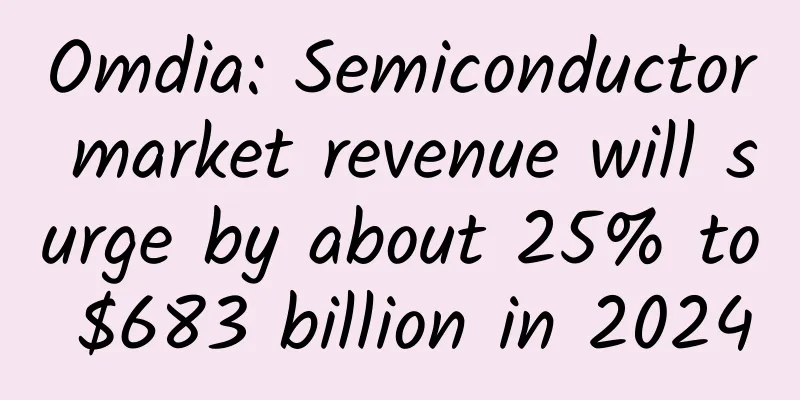Omdia: Semiconductor market revenue will surge by about 25% to $683 billion in 2024

|
2024 is a record year for the semiconductor market, with Omdia data showing that revenue in 2024 will surge by about 25% to $683 billion. The sharp growth is attributed to strong demand for AI-related chips, especially high-bandwidth memory (HBM) used in AI GPUs, which has led to an annual growth rate of 74% in the memory sector. After a challenging 2023, the rebound in memory has helped boost the overall market. However, the record year masked an uneven performance across the industry. The data processing sector grew strongly, while other key sectors such as automotive, consumer and industrial semiconductors saw revenue declines in 2024. These struggles highlighted weak links in an otherwise booming market. AI and memory set for a strong 2024 AI-powered financial toolsThe impact of AI on the semiconductor market has been dominant throughout 2024, driving record revenues and reshaping industry dynamics. Nvidia has emerged as the undisputed leader, with strong revenue growth and rising market share over the past few years thanks to its AI GPUs. As an important component of AI applications, HBM sales have also surged, significantly boosting the revenues of memory companies. Although HBM's growth rate has exceeded that of other DRAM segments, the improvement in supply and demand balance has also contributed to higher average selling prices (ASPs) and revenue growth for the entire memory market. Industrial sector faces second consecutive year of decline The decline in the industrial semiconductor sector begins in 2023 and deepens in 2024, creating challenges for companies focused on this sector. "Historically, the industrial semiconductor market has grown by about 6% per year, however, after two years of above-average growth in 2021 and 2022, semiconductor market revenues fell by double digits in 2024," said Cliff Leimbach, principal analyst at Omdia. "Lower demand coupled with inventory adjustments make 2024 a difficult year for the industrial sector. Companies with a large presence in this sector have also seen their market share rankings fall as a result." The automotive market is stagnant While the automotive semiconductor market performs better than the industrial sector, it also experiences a revenue decline in 2024. The automotive semiconductor market nearly doubled in size from 2020 to 2023, far exceeding the historical average annual growth rate of 10%. Weak demand leads to a contraction in 2024, breaking the market's steady upward trajectory in recent years. Nvidia tops the list, market rankings change Nvidia's dominance in artificial intelligence-driven GPUs has vaulted it to the top of a ranking of semiconductor companies by revenue, overtaking Samsung, which was ranked first in 2023. The strong memory market also reshaped the rankings, with Samsung, SK Hynix and Micron all among the seven largest semiconductor companies by revenue. Each of these companies moved up at least one position compared to the 2023 rankings, marking a significant change from the previous year's rankings, when these companies were spread across the top eleven. |
Recommend
Want to buy an electric car with a range of 400km for less than 200,000 yuan? After the subsidy, you can consider this BYD
The trend of automobile electrification seems to ...
US brokerage firm upgrades Intel rating, says PC market may be over
U.S. brokerage firm Northland Capital Markets tod...
How to attract traffic and monetize through WeChat red envelope covers?
Today I want to ask you a few questions, and you ...
Tips for placing Qianchuan ads on Douyin stores
The short video sales model has become a trend, e...
5G mobile phone communication performance evaluation is released: various indicators have been significantly improved, but battery life still needs to be improved
[[435033]] In terms of 5G mobile phone communicat...
The glory of "Chinese products" in the Song and Yuan Dynasties! Its exquisite craftsmanship impressed the world and sold well in many overseas countries
The lotus-petal-patterned bowl from the Song Dyna...
For those of you who are “flying” home for the New Year, please check out the “Safety Guide for Flight Attendants in Cold Weather”!
The annual grand "human migration" - Sp...
How can entrepreneurs write stories like the great Annie “Annie of the 1%”?
Yu Jiawen left, and Annie came, creating a phenom...
The latest ranking of 56 information flow advertising media platforms
The following is the latest traffic rankings of 5...
Tsinghua University teacher Pan Pan's learning motivation
Tsinghua University teacher Pan Pan's introdu...
A 21-year-old college student uncovered the mystery of an ancient scroll from 2,000 years ago: using AI to reproduce the "lost" text
The ancient scroll text that "disappeared&qu...
Argument on the hot search! Skipping breakfast VS skipping dinner, which one has a greater impact on the body?
In the fast-paced modern life, many people often ...
How to grow the "Zebra AI Class" app!
The app has been downloaded 28 million times in t...
Check for omissions! 7 user experience design details that you may have never noticed
The user experience design of an excellent produc...
Ninebot E-Series Test Drive Experience: This is what a motorcycle should look like in the Internet era
In recent years, with the deteriorating environme...









